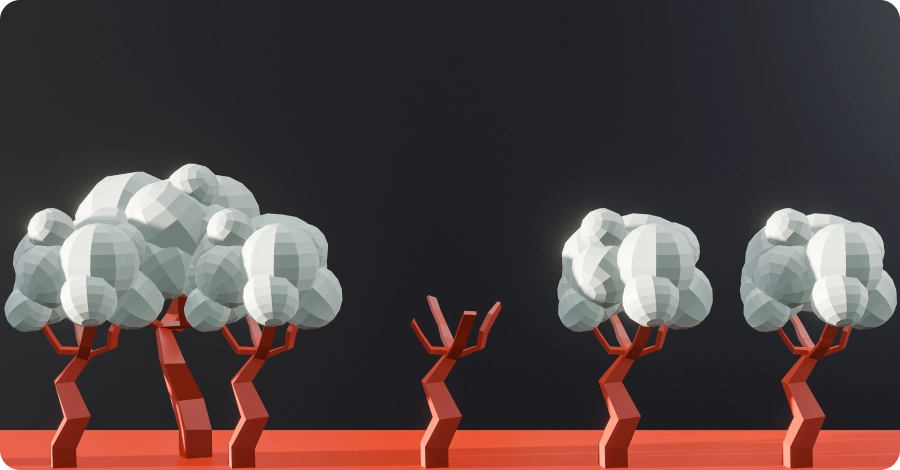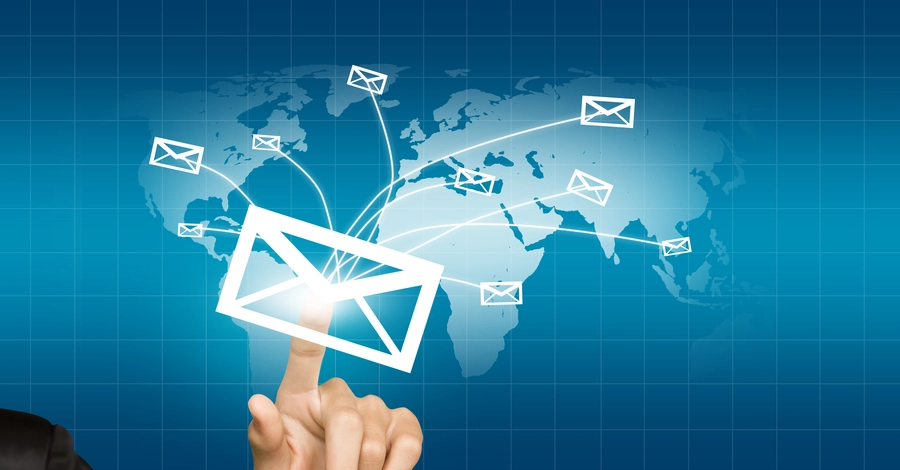What is a Gap Model of Service Quality? Types & Examples
- February 11, 2025
- 12 mins read
- Listen

Table of Content
Businesses work hard to deliver great service, but customers still feel disappointed at times. Why? There are often unseen gaps between what businesses think customers want and what they expect. The Gap Model of Service Quality uncovers these gaps, helping companies improve communication, service delivery, and customer satisfaction.
In this blog, we’ll break down the gap model of service quality, share real-life examples, and provide actionable tips to help you deliver exceptional service.
What is the Gap Model of Service Quality?
The Gap Model of Service Quality is a framework that helps businesses identify and close gaps between customer expectations and actual service delivery. It highlights five key gaps: Knowledge Gap, Policy Gap, Delivery Gap, Communication Gap, and Customer Gap. By addressing these gaps, companies can improve customer satisfaction, enhance service quality, and build long-term trust.
These gaps occur at different stages of service delivery, from understanding customer needs to executing the service. By addressing these gaps, businesses can improve service quality, boost customer satisfaction, and build stronger relationships with their audience.
5 Gaps in the Service Quality Model
Delivering excellent service isn’t just about good intentions. It’s about understanding where service failures happen and fixing them. The gap model of service quality highlights five key gaps that lead to poor customer experiences.
These gaps prevent businesses from meeting customer expectations and building long-term loyalty. Let’s explore each one in detail.
Gap 1: The Knowledge Gap
The Knowledge Gap happens when a business does not understand what its customers expect. This gap exists when management’s perception of customer expectations is different from reality. Many companies assume they know what their customers want, but without proper research, these assumptions can be wrong.
This gap usually occurs due to a lack of market research, ineffective data collection, or weak communication with customers. Businesses may rely on outdated feedback or limited customer interactions. As a result, they fail to recognize changing needs and preferences.
For example, a clothing brand might believe customers prefer stylish designs. However, most customers actually look for comfort and affordability. Without proper research, the company invests in high-fashion trends and ignores what customers truly need.
The Knowledge Gap leads to misaligned products and services, which frustrates customers. When expectations are not met, customer satisfaction drops. Businesses must actively listen to their customers and stay updated on market trends to close this gap.
Gap 2: The Policy Gap
The Policy Gap occurs when a business understands customer expectations but does not create the right service standards. This means that even if management knows what customers want, their policies, procedures, and guidelines do not support it.
One major reason for this gap is poor service design. Companies may fail to set clear rules or create unrealistic standards that employees cannot meet. Sometimes, businesses also lack flexibility, which makes it hard to adjust services based on customer needs.
For instance, a hotel may know that guests expect fast check-in. However, guests will face long waiting times if the hotel does not set a policy for a quick check-in process. Even if employees want to help, they lack the proper system to deliver fast service.
The Policy Gap leads to service inefficiencies and customer dissatisfaction. It creates frustration for both employees and customers. To fix this, businesses must design service policies that are realistic, customer-focused, and easy to follow.
Gap 3: The Delivery Gap
The Delivery Gap happens when employees fail to deliver the service as promised. Even if a company has good policies, execution can fall short. This means there is a difference between what is expected and what is actually delivered.
This gap is common when businesses do not provide proper training, resources, or motivation to employees. Workers may lack the skills to meet customer expectations. Sometimes, heavy workloads and staff shortages also make it hard to deliver high-quality service.
For example, a restaurant may promise fast service, but if the kitchen staff is overwhelmed, orders get delayed. Customers experience slow service, which leads to frustration. The restaurant’s promise and actual service do not match, creating a Delivery Gap.
This gap directly affects customer satisfaction and brand reputation. People expect reliable service, and when businesses fail to deliver, trust is lost. Companies need to invest in employee training, proper staffing, and efficient processes to bridge this gap.
Gap 4: The Communication Gap
The Communication Gap occurs when a company’s advertising and external communication do not match the actual service provided. Businesses sometimes make promises that sound great in marketing campaigns but fail to deliver in real life.
This happens due to overpromising, misleading promotions, or a lack of coordination between marketing and service teams. Companies may exaggerate features to attract customers, but when expectations are not met, customers feel misled.
For instance, a gym might advertise 24/7 access, but in reality, some locations close early. Customers who expect round-the-clock service will feel disappointed and frustrated. This damages trust and lowers customer satisfaction.
The Communication Gap leads to broken promises and negative reviews. Customers feel cheated when they do not get what they were promised. Businesses must ensure all marketing messages are accurate, transparent, and aligned with actual service capabilities.
Gap 5: The Customer Gap
The Customer Gap is the most important. It represents the difference between what customers expect and what they actually experience. This gap is often a result of one or more of the previous four gaps.
When customer expectations are not met, frustration builds. Even if a company believes it is offering great service, if customers feel otherwise, it creates dissatisfaction. The Customer Gap is a direct reflection of service failures.
For example, an online store may believe it provides fast delivery. However, if customers regularly experience delays, their perception of service quality is poor. This leads to negative reviews, lost customers, and lower sales.
Bridging this gap requires continuous improvement, regular feedback collection, and customer-focused service strategies. Businesses must listen to their customers, fix service issues, and ensure every interaction meets expectations.
Effective Ways to Bridge the Service Quality Gaps
Closing gaps is essential for delivering exceptional service. The real challenge is closing these gaps to improve customer experience. Each gap requires specific strategies to ensure better service delivery.
Below are effective ways to bridge each gap and create a strong foundation for customer satisfaction.
Gap 1: The Knowledge Gap
The Knowledge Gap exists when a business does not fully understand customer expectations. To bridge this gap, companies must focus on gathering and using customer insights effectively.
- Conduct Regular Customer Research – Businesses should invest in surveys, interviews, and focus groups to understand customer needs. Online reviews and social media feedback also provide valuable insights.
- Analyze Customer Data – Companies should track purchase patterns, complaints, and feedback trends. Data-driven decisions help businesses adjust their services to meet expectations.
- Improve Internal Communication – Employees should regularly share customer feedback with management. A well-connected team ensures that insights are not lost.
- Create Customer Personas – Understanding different customer segments allows businesses to tailor their services to match unique needs.
Closing the Knowledge Gap requires an ongoing commitment to learning. Companies must listen to their customers and stay updated on changing expectations.
Gap 2: The Policy Gap
The Policy Gap happens when a company knows what customers want but fails to set the right service standards. To bridge this gap, businesses must align their policies with customer expectations.
- Develop Clear and Realistic Service Standards – Policies should be achievable, measurable, and focused on customer satisfaction.
- Regularly Review and Update Policies – Customer needs to evolve, and policies must be flexible enough to adapt. Companies should review service standards regularly.
- Train Employees on Service Expectations – A well-trained workforce understands policies and delivers consistent service.
- Allow for Some Flexibility – Rigid policies can frustrate customers. Businesses should empower employees to handle unique situations with discretion.
By aligning policies with customer needs, businesses can eliminate service inefficiencies and improve overall satisfaction.
Gap 3: The Delivery Gap
The Delivery Gap occurs when employees fail to provide service as promised. Even with good policies, execution can fall short if businesses do not provide the right tools and support.
- Train Employees for Better Performance – Proper training ensures that staff understands procedures and delivers services efficiently.
- Ensure Adequate Staffing – Understaffed businesses struggle to maintain quality. Hiring enough employees prevents delays and improves customer experience.
- Use Technology to Improve Efficiency – Automation and AI-driven tools can help streamline operations and reduce human error.
- Monitor and Reward Performance – Businesses should track service quality and recognize employees who meet or exceed expectations.
Fixing the Delivery Gap requires empowering employees and improving processes. When staff members are well-equipped, they can deliver consistent and high-quality service.
Gap 4: The Communication Gap
The Communication Gap happens when businesses fail to match their marketing promises with actual service. To close this gap, honesty and transparency must be the top priorities.
- Align Marketing with Reality – Businesses should avoid overpromising in advertisements and promotions. It’s better to exceed expectations than to disappoint customers.
- Improve Coordination Between Teams – Marketing, sales, and service departments should work together to ensure messaging is accurate.
- Provide Clear and Honest Information – Service details, pricing, and policies should be easy to understand and readily available.
- Respond Quickly to Customer Concerns – If a misunderstanding happens, businesses should acknowledge the issue and correct it immediately.
When companies communicate honestly, they build trust and long-term relationships with customers.
Gap 5: The Customer Gap
The Customer Gap reflects the difference between what customers expect and what they experience. This gap must be minimized to ensure high customer satisfaction and loyalty.
- Collect and Act on Customer Feedback – Businesses should encourage reviews and make improvements based on customer insights.
- Ensure a Smooth Customer Journey – Every touchpoint, from website navigation to after-sales service, should be seamless and hassle-free.
- Personalize Customer Interactions – Customers appreciate services tailored to their needs and preferences. Personalization enhances satisfaction.
- Deliver Consistent Service Quality – Whether online or in-store, service levels should remain the same across all channels.
Bridging the Customer Gap requires constant improvement and a deep commitment to meeting expectations. Businesses that focus on customer satisfaction will always have an advantage.
Tips for Implementing the Gap Model in Your Business
To successfully apply the Gap Model of Service Quality, businesses must take strategic and practical steps. Below are highly valuable tips to help you close service gaps and enhance customer satisfaction.
- Understanding customer expectations is key. Use surveys, focus groups, and online reviews to gather insights. The more you know about your customers, the better you can serve them.
- Policies should not be created in isolation. Regularly review and update them based on customer feedback and market trends. Ensure policies support both customer satisfaction and business efficiency.
- Employees need clear guidelines and training to deliver promised services. Invest in customer service workshops, role-playing exercises, and real-time feedback sessions to improve their performance.
- Departments must collaborate to ensure consistency in service. Marketing, sales, and customer support teams should share information and align messaging to avoid confusion.
- Avoid overpromising in advertisements. Marketing should reflect the actual service experience. Misleading claims lead to disappointment and a loss of customer trust.
- Use automation, AI chatbots, CRM systems, and data analytics to improve customer interactions. Technology helps reduce human error and streamline operations.
- Track key performance indicators (KPIs) like customer satisfaction scores, response time, and complaint resolution rates. Use this data to find and fix weak areas.
Real-World Examples of the Gap Model in Action
When a business wants to fill the gaps, it must understand the gaps in customer service quality. Once it is identified, it becomes easier to take action.
Below are two real-world examples where businesses faced service quality gaps and successfully bridged them using the right strategies.
Example 1: stc – Overcoming Customer Support Challenges
Saudi Telecom Company (stc) serves millions of customers, making customer support a major challenge. With such a large customer base, handling inquiries, complaints, and technical issues manually was overwhelming. Customers often faced delayed responses, leading to dissatisfaction. This created a Customer Gap, where expectations were not met due to slow service.
To solve this, stc implemented REVE Chat’s AI-powered chatbot and live chat solution. The chatbot allowed them to automate responses, resolve common queries instantly, and provide 24/7 support. Meanwhile, the live chat feature enabled human agents to handle complex issues efficiently. This combination improved response time, reduced customer frustration, and enhanced service quality.
As a result, stc successfully bridged the gap between customer expectations and actual service delivery.
Example 2: 10-Minute School – Making Learning Frictionless
As Bangladesh’s largest online education platform, 10 Minutes School faced rapid growth, leading to an increasing number of student inquiries.
Students needed instant support for course details, enrollment assistance, and technical issues. However, relying only on human support teams created a Delivery Gap—where service quality specifications were not consistently met.
To address this, 10 Minute School integrated REVE Chat’s chatbot and live chat features. The AI chatbot answered frequently asked questions instantly, allowing support teams to focus on complex issues. Live chat enabled human agents to provide personalized support when needed.
This solution streamlined communication, improved response times, and enhanced student satisfaction. With REVE Chat, 10 Minute School successfully bridged the Delivery Gap and improved customer experience.
Conclusion
The Gap Model of Service Quality helps identify where businesses fall short and provides a roadmap to improvement. By understanding the five gaps and taking strategic steps to bridge them, companies can deliver better experiences, build trust, and foster long-term customer loyalty.
Success lies in listening to customers, aligning policies, empowering employees, and ensuring clear communication. Small but consistent improvements can lead to exceptional service quality. Now, it’s time to take action. Assess your service gaps, implement the right strategies, and watch your customer satisfaction soar.
Frequently Asked Questions
The Gap Model of Service Quality is a framework that helps businesses understand the differences between customer expectations and actual service performance.
It identifies areas where service quality falls short and provides insights on how to improve customer satisfaction. By addressing these gaps, businesses can enhance customer experience and build stronger relationships.
The Gap Model helps businesses identify weaknesses in their service delivery and create strategies to improve.
By understanding where service failures occur, companies can make informed decisions to enhance processes, train employees, and align marketing messages with reality.
This leads to higher customer retention, positive brand reputation, and long-term success.
To bridge the Knowledge Gap, businesses must invest in customer research, gather feedback regularly, and analyze customer behavior using data analytics.
Conducting surveys, interviews, and monitoring online reviews can help understand customer needs better. Companies should also encourage open communication between employees and customers to ensure no disconnect exists.
Technology plays a crucial role in minimizing service quality gaps by improving efficiency and communication. CRM systems help businesses track customer interactions, AI chatbots enhance response time, and automation ensures consistency in service delivery.
Additionally, data-driven insights help businesses refine their policies, improve training programs, and deliver a seamless customer experience.
Closing service gaps leads to higher customer satisfaction, stronger brand loyalty, and increased revenue.
When businesses consistently meet or exceed expectations, they build trust and encourage repeat business.
Additionally, improving service quality reduces customer complaints, enhances operational efficiency, and strengthens a company’s competitive position in the market.
If you want to deliver the top and effective customer service for your business, all you need to develop a good work culture and gaps for your business.



